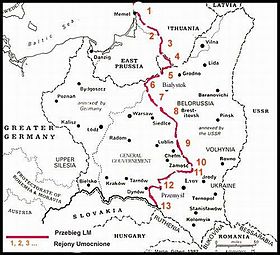
The Continuation War, also known as the Second Soviet-Finnish War, was a conflict fought by Finland and Nazi Germany against the Soviet Union (USSR) from 1941 to 1944, as part of World War II. In Soviet historiography, the war was called the Finnish Front of the Great Patriotic War. Germany regarded its operations in the region as part of its overall war efforts on the Eastern Front and provided Finland with critical materiel support and military assistance, including economic aid.

The siege of Leningrad was a prolonged military blockade undertaken by the Axis powers against the Soviet city of Leningrad on the Eastern Front of World War II. Germany's Army Group North advanced from the south, while the German-allied Finnish army invaded from the north and completed the ring around the city.

The Battle of Narva was a World War II military campaign, lasting from 2 February to 10 August 1944, in which the German Army Detachment "Narwa" and the Soviet Leningrad Front fought for possession of the strategically important Narva Isthmus.

The Northwestern Front was a military formation of the Red Army during the Winter War and World War II. It was operational with the 7th and 13th Armies during the Winter War. It was re-created on 22 June 1941, the first day of the Soviet-German War on the basis of the Baltic Special Military District. On 22 June the Front consisted of the 8th, 11th, and 27th Armies, as well as the 5th Airborne Corps and the headquarters of the 65th Rifle Corps.
The Volkhov Front was a major formation of the Red Army during the first period of the Second World War. It was formed as an expediency of an early attempt to halt the advance of the Wehrmacht Army Group North in its offensive thrust towards Leningrad. Initially the front operated to the south of Leningrad, with its flank on Lake Ladoga.

The 7th Army was a Soviet Red Army field army during World War II, primarily against Finland. It was disbanded in 1944.
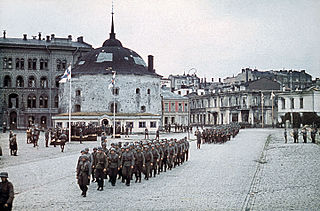
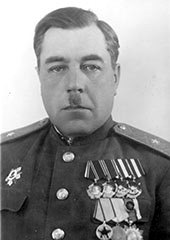
Roman Ivanovich Panin was a Soviet major general from during World War II. An Imperial Russian Army junior officer in World War I, he joined the Red Army in 1919. Panin fought in the Russian Civil War and continued to serve after the end of the Russian Civil War. He was an advisor to the National Revolutionary Army between 1938 and 1939. Later he participated in the Soviet-Finnish war as a corps commander, and during World War II as the commander of the 14th Army, commanding the defense of Murmansk during Operation Silver Fox. Panin became commander of the 2nd Reserve Army in May 1942 and two months later became a lecturer at the Frunze Military Academy. In February 1943 he became Volkhov Front chief of combat training and in September led the 7th Rifle Corps. After participating in the Leningrad–Novgorod Offensive, Panin briefly led the 99th Rifle Corps. In July 1944, Panin became deputy commander of the 5th Army. Hospitalized in February 1945 during the East Prussian Offensive, Panin did not see further action. After recovering he became an instructor at the Frunze Military Academy and retired in 1949. He died shortly afterwards.
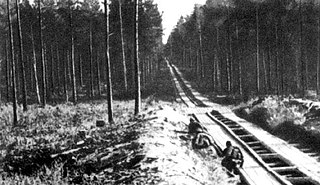
The Sinyavino offensive was an operation planned by the Soviet Union in the summer of 1942 with the aim of breaking the siege of Leningrad, which had begun the previous summer, and establish a reliable supply line to Leningrad. At the same time, German forces were planning Operation Northern Light to capture the city and link up with Finnish forces. To achieve that heavy reinforcements were arriving from Sevastopol, which the German forces captured in July 1942. Both sides were unaware of the other's preparations, and this made the battle unfold in an unanticipated manner for both sides.
The 11th Rifle Division was a military formation of the Soviet Union's Red Army. Its personnel were involved in the protection of the demarcation line in Pskov, defensive battles against the Army of the Southern Front in Krasnov Novohopersk - Borisoglebsk, against the army and the forces of Estonia, Bulak Balakhovich in Marienburg in defense of Petrograd and as the offensive against Yudenich's troops in Pskov the Luga-Gdov, Yamburg, Narva, Dvina-Rezhitsk directions, the Polish-Soviet war of 1920, in the suppression of the Kronstadt uprising participated in the Soviet-Finnish War and World War II.
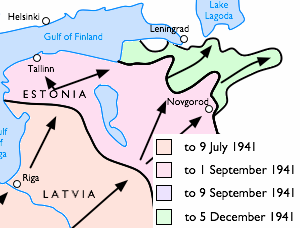
Leningrad strategic defensive operation is the term in Soviet historiography for the defensive operations in the area south of Leningrad by the Red Army and the Soviet Navy during World War II from 10 July to 30 September 1941. The following operations are considered as part of the strategic operation:
The 48th Army was a field army of the Soviet Red Army, active from 1941 to 1945. The army was first formed in August 1941 and fought in the Leningrad Strategic Defensive Operation. The army suffered heavy losses and was disbanded in early September. Its remnants were moved to the 54th Army. Reformed in April 1942 on the Bryansk Front, the army fought in the Maloarkhangelsk Offensive in the winter of 1943. It was sent to the Central Front in March and defended the northern face of the Kursk Bulge. During the summer, it fought in Operation Kutuzov and the Chernigov-Pripyat Offensive. From November, the army fought in the Gomel-Rechitsa Offensive. The army fought in Operation Bagration from June 1944. During the offensive, the army captured Zhlobin and Bobruisk and was on the Narew by early September. During early 1945, the army fought in the East Prussian Offensive and ended the war in East Prussia during May. The army was transferred to Poland in July 1945 and its headquarters was used to form the Kazan Military District in September.
The 1st Army Corps was an army corps of the Soviet Armed Forces. It was formed in 1957 and finally deactivated in 1991. It draws its history from the 1st Rifle Corps, formed in 1922. Troops of the 1st Rifle Corps participated in the Winter War and World War II.
The Red Army's 54th Army was a Soviet field army during the Second World War. It was first formed in the Leningrad Military District in August, 1941, and continued in service in the northern sector of the Soviet-German front until the end of 1944. It spent much of the war attempting to break the German siege of Leningrad, in which it helped to achieve partial success in January, 1943, and complete success one year later. During these operations the soldiers of the 54th served under five different commanders, most notably Col. Gen. Ivan Fedyuninsky in the winter of 1941–42. After helping to drive Army Group North away from Leningrad and into the Baltic states in the first nine months of 1944, the army was deemed surplus to requirements on the narrowing front, and was officially disbanded on the last day of the year.
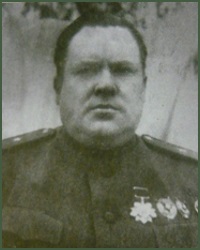
The 310th Rifle Division was a standard Red Army rifle division formed on July 15, 1941 in Kazakhstan before being sent to the vicinity of Leningrad, where it spent most of the war, sharing a similar combat path with its "sister", the 311th Rifle Division. The soldiers of the division fought until early 1944 to, first, hold open some sort of lifeline to the besieged city, then to break the siege and drive off the besieging German forces. They then participated in the offensive that drove Germany's Finnish allies out of the war. Finally, the division was redeployed to take the fight to the German heartland in the winter and spring of 1945. It ended the war north of Berlin with a very creditable combat record for any rifle division.
The 49th Rifle Division was a Soviet Army infantry division, formed three times. First formed as a territorial division in 1931, the 49th Rifle Division's first formation became a regular division by 1939 and fought in the Winter War. For its actions during the war, it was awarded the Order of the Red Banner. However, the 49th Rifle Division was wiped out during the first ten days of Operation Barbarossa. Its second formation occurred in December 1941 and fought at Stalingrad, Kursk, the Vistula-Oder Offensive and the Battle of Berlin. The second formation was disbanded in 1946. The division was reformed in 1955 by renaming the 295th Rifle Division and became the 49th Motor Rifle Division in 1957.
The 67th Army was a field army of the Soviet Union's Red Army. The 67th Army was formed in October 1942 on the Leningrad Front from the Neva Operational Group. It defended the right bank of the Neva River, holding the Nevsky Pyatachok and covering the Road of Life. In January 1943 the army fought in Operation Iskra. In late December, the army was combined with 55th Army. The 67th Army headquarters was disbanded and 55th Army headquarters was renamed 67th Army headquarters. Between January and March 1944 67th Army fought in the Leningrad–Novgorod Offensive, in which it captured Mga and Luga. In April the army became part of the 3rd Baltic Front and fought in the Pskov-Ostrov Offensive in July and the Tartu Offensive in August and September. The army fought in the Riga Offensive in September and October. The army then fought to eliminate the Courland Pocket. After the end of the war the army was disbanded during the summer of 1945.

The 314th Rifle Division was a standard Red Army rifle division formed on July 15, 1941 at Petropavlovsk in northern Kazakhstan, before being sent to the vicinity of Leningrad, in the 7th Separate Army east of Lake Ladoga, facing the Finnish Army in East Karelia for more than a year. In consequence the division saw relatively uneventful service on this mostly quiet front until the autumn of 1942, when it was moved south to face German Army Group North, and took a leading role in Operation Iskra, which finally drove a land corridor through to besieged Leningrad in January 1943; a year later it also served prominently in the offensive that broke the enemy siege for good. During the summer the division played a role in the offensive that drove Finland out of the war. Following this, the 314th spent a few months fighting in the Baltic States, before being reassigned southwards to 1st Ukrainian Front to take the fight into Poland and then into the German heartland in the winter and spring of 1945. It ended the war in Czechoslovakia with a distinguished record of service.
The 11th Rifle Corps was a corps of the Red Army, formed twice.

Filipp Nikiforovich Starikov was a Soviet military commander.
